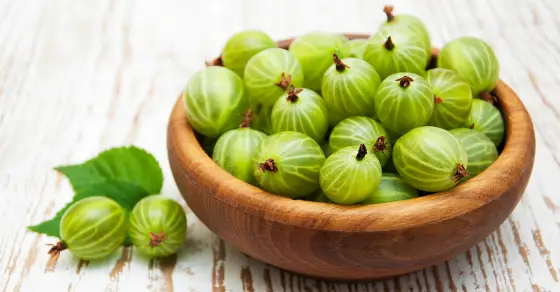Most people add salt to their food without ever giving it a second thought. But what would you do if you knew that the shaker filled with tiny white granules to enhance the flavor of your food was also filled with toxic microplastics that could be harmful to your health?
Salt has gotten a bad rap when it comes to its effects on health, mostly because too much of the wrong type of salt can have an effect on blood pressure. But not all salt is the same. It’s the highly processed table salt that sits on grocers’ shelves that is the most dangerous to your health.
Common table salt has been stripped of everything other than sodium and chloride, removing any blood pressure-regulating nutrients, such as potassium or magnesium. Processed salt is also typically bleached and chemicals are added to stop it from clumping. But there’s still more to most table salt than what meets the eye. The vast majority of salt sold in stores contains microplastics—an inedible and dangerous component of salt that you can’t see, taste or find listed on a label. They may be too small to see, but microplastics may be having a big impact on your health.
What Are Microplastics? And Why Are They In My Salt?
Approximately 8 million tons of plastic garbage is dumped into the ocean every year (and due to increasing pollution rates, that number will continue to grow). Over time, this garbage breaks down into tiny pieces of plastic, called microplastics. As these minute plastic particles float in the ocean, salt in the water crystallizes around them.
When salt water is processed to create common table salt, the microplastics cannot be removed, even though the processing strips away everything else except for the sodium chloride. That means that if the water used to make the salt is taken from a location contaminated with garbage, there’s no way to stop the salt from being tainted with microplastics—and nearly all ocean water contains microplastics.
Plastic garbage in my salt? Eww!
Here’s what salt containing no garbage tastes like (Hint: There’s a difference).
If microplastics are so small, are they really such a big deal?
One tiny particle of plastic that’s inadvertently ingested may not seem like too big a deal. But consider this—the average adult consumes approximately 2,000 microplastics a year by using processed salt, according to a study published in Environmental Toxicology and Chemistry. That’s the amount of plastic in one credit card!
When you think about consuming the amount of plastic in a credit card, suddenly that tiny particle of plastic doesn’t seem so innocent any more, does it?
I don’t want to ingest a credit card’s worth of plastic! Show me how I can enjoy salt that’s not tainted with plastic.
So What Happens When You Ingest Microplastics?
Ok, here’s where things start to get a little dicey. Researchers have conducted a wide range of animal studies and have found that ingested microplastics can pass the gut barrier and enter the bloodstream. From there, these tiny particles can travel all over the body.
One study showed that microplastics were detected in the stomach, intestines, kidneys, and heart of rats1. Other studies found that microplastics in pregnant mice crossed the placenta to the fetus2 and plastic nanoparticles in the brains of fish caused behavioral disorders and brain damage3.
Researchers have hypothesized from the findings in animal studies that when humans ingest tiny particles of plastic, it may lead to:
- Oxidative stress
- DNA damage
- Chronic inflammation
- The Hull York Medical School found that microplastics may cause:
- Cell death
- Allergies
- Cell wall damage to human tissues
Another problem with the microplastics you unknowingly ingest when you use table salt? They may cause some serious hormone disruption, which can lead to a host of health issues.
I don’t want tiny particles of plastic traveling through my body!
Try one of the only types of salt that doesn’t contain microplastics.
How Do Microplastics Affect Hormone Function?
Thousands of manufactured chemicals and phthalates found in plastics are considered to be Endocrine Disrupting Chemicals (EDCs), which means they can interfere with normal hormonal functioning. These chemicals wind up in the microplastics that litter the ocean. So they also end up in table salt.
By affecting hormone function, chemicals in plastic may be implicated in a wide range of health issues, from obesity, diabetes, cancer and heart disease to fertility, cognitive and behavioral problems.
Salt messing with my hormones? No way!
Get a free sample of salt that has no hormone disrupting microplastics by clicking here.
Does All Salt Contain These Hormone Disrupting Microplastics?
You may think you’re doomed to ingest microplastics unless you give up all salt. But who wants to do that? After all, salt makes food taste good!
But you’ll be happy to know that there are ways to enjoy the flavor-enhancing benefits of salt without being impacted by any ill effects from what’s in that salt. You just have to choose the right salt!
If you want to ensure that your salt has no ocean-borne plastics hiding in it, then there’s just one way to make that happen. You have to use salt that is not made from ocean water, because all ocean water across the globe has been contaminated to some extent with plastic garbage.
There IS salt that doesn’t contain ocean-borne microplastics!
Click here to claim a free bag of this premium salt.
What Type Of Salt Contains No Ocean-Borne Microplastics?
Just south of Puerto Vallarta, lies a pristine body of fresh water in Colima, Mexico called the Cuyutlán Lagoon. Pure rain water percolates through this ancient dry salt lagoon, dissolving minerals along the way and creating some of the only uncontaminated salt water on earth.
Water from this lagoon is pumped to the surface, where the hot sun naturally evaporates the water, leaving unspoiled salt crystals behind that are harvested by local “salinero” salt farmers. Because this salt does not come from ocean water, there is no trace of ocean-borne microplastics in Colima salt. That means you don’t have to worry about any negative health effects from using this untainted mineral salt.
Pristine salt from a fresh water lagoon?
I want to try a free bag of this unique gourmet salt! Click Here To Try It Now.
No ocean-borne microplastics in salt? I’m in!
Not only does Colima salt contain no ocean-borne microplastics because it doesn’t come from ocean water, but it also offers other health benefits.
For starters, the rich mineral salt contains 80 essential nutrients in addition to sodium and chloride. Some of these nutrients include potassium, magnesium, calcium, iron, copper, zinc, sulfur, carbon, silicon, aluminum, manganese, and fluoride, among others. These nutrients have been shown to improve health in numerous ways, from improving respiratory diseases and regulating blood pressure to balancing pH levels and reducing signs of aging.
Since Colima salt is 100% unrefined, unlike most salt you find on grocers’ shelves, it also contains:
No additives
No preservatives
No bleach or other chemicals
So all you ingest is pure, mineral-rich salt that’s actually good for you.
Minerals in—check! Additives out—check!
Click here to try a bag of unprocessed salt that has health benefits today!
Is there anything else about Colima Salt I should know?
As if it weren’t enough that this premium salt is unprocessed, unrefined, and devoid of any ocean-borne microplastics that may harm your health, the icing on the cake is that this salt is not like any salt you’ve ever tasted before. It’s way better!
The large granules are coarse and crunchy, imparting a fresh natural flavor that enhances food. The salt is also moist, so it won’t dehydrate your food or dissolve like finely ground salt. This salt is meant for sprinkling, not shaking—and a little goes a long way. All you need are a few flakes to make your taste buds soar. The salt intensifies the flavor of food and tastes so good, you can even lick your fingers. Now that’s something you definitely don’t want to do with table salt!
Try a free bag of Colima Salt by clicking here..
It’s not only better for your health, but it tastes great, too! is this salt in a league of its own?
Colima Salt is like no salt you’ve ever used before. It’s not processed with chemicals or additives, doesn’t contain ocean-borne microplastics that may disrupt your hormones or harm your health, and to top it all off, the taste is far superior to any salt you’ve likely ever tasted.
So what are you waiting for?
Grab your free bag of Colima Salt today by clicking here to visit their website!
Recommended Reading:
Celtic Salt & Redmond Real Salt Tested Higher In Heavy Metals Than MULTIPLE Other Salt Brands – Here’s What You Need To Know
References:
1. https://link.springer.com/article/10.1007/s11051-015-3029-y
2. https://pubmed.ncbi.nlm.nih.gov/26526105/
3. https://www.nature.com/articles/s41598-017-10813-0
4.https://environmentjournal.online/articles/microplastic-pollution-number-one-threat-to-humankind/





